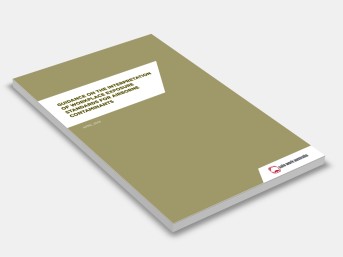Guidance on the interpretation of workplace exposure standards for airborne contaminants
Safe Work Australia
Exposure to substances or mixtures in the workplace can occur through inhalation, absorption through the skin or ingestion. Most exposure occurs through the inhalation of vapours, dusts, fumes or gases. For some chemicals, absorption through the skin may also be a significant source of exposure.
The response of the body from exposure to substances and mixtures depends on the nature of the substance, the health effects it can cause and the amount of the substance or mixture absorbed by the body. Individuals also have differing abilities to metabolise chemicals which can cause considerable variation in the toxic effects between people. The extent to which a person is exposed depends on the concentration of the substance or mixture in the air, the amount of time exposed and the effectiveness of controls. Substances and mixtures may cause immediate acute health effects or it may be decades before effects on the body become evident.
Exposure standards have been established in Australia for approximately 700 substances and mixtures. However, there are many other substances and mixtures hazardous to human health and used in workplaces that do not have a mandatory exposure standard established. Exposure standards are updated occasionally and may not always reflect the latest research or state of knowledge on the hazardous effects of chemicals. Exposure standards do not identify a dividing line between a healthy or unhealthy working environment. Natural biological variation and the range of individual susceptibilities mean some people might experience adverse health effects below the exposure standard. Therefore, exposure standards should not be considered as representing an acceptable level of exposure to workers. They establish a statutory maximum upper limit.
All reasonably practicable steps must be taken to eliminate or minimise exposure to a level well below the exposure standard. Sections 17 and 19 of the WHS Act require that the risks posed by exposure to substances in the workplace are eliminated or kept as low as is reasonably practicable.
For this reason, it is important the airborne concentration of a substance or mixture hazardous to health is kept as low as is reasonably practicable to minimise the risk to health, regardless of whether or not there is an exposure standard or what the value of the exposure standard is.
Where there is no mandatory exposure standard established in Australia, other established exposure standards or action levels should be used by a PCBU to assist minimising exposure to chemicals.
Exposure measurement must not be used as an alternative to controlling exposure by putting in place hazard controls. Air monitoring is best done after control measures have been put in place. Compliance with the WHS legislation will require being able to demonstrate all reasonably practicable hazard controls are in place and effective and that attempts have been made to eliminate or minimise exposure, as well as not exceeding the relevant exposure standard.
Exposure standards are not designed to be applied to situations outside of a workplace or to the exposure of people, like bystanders or nearby residents, not directly engaged in the work involving the hazardous chemical. However, the WHS Act also requires a PCBU to minimise risk to third parties. This is regardless of whether an exposure standard has been established or not. The primary focus should always be on eliminating or, if this is not possible, minimising exposure through use of hazard controls.
A person conducting a business or undertaking must manage the risks associated with using, handling and storing hazardous chemicals at a workplace. The Code of practice: Managing Risks of Hazardous Chemicals in the Workplace provides guidance on a four step risk management approach involving the key steps of hazard identification, risk assessment, risk control and review.
Information about the hazards of a chemical should be available from the label or Safety Data Sheet (SDS) for most substances or mixtures.
Contents:
1: Introduction
2: Complying With Exposure Standards
3: Adjustment Of Exposure Standards For Extended Work Shifts
4: Other Factors Affecting Exposure
5: Information Relating To Specific Groups Of Substances
Appendix A: The Meaning of Key Terms
Appendix B: Models For Adjusting Exposure Standards
Appendix C: References And Further Information
